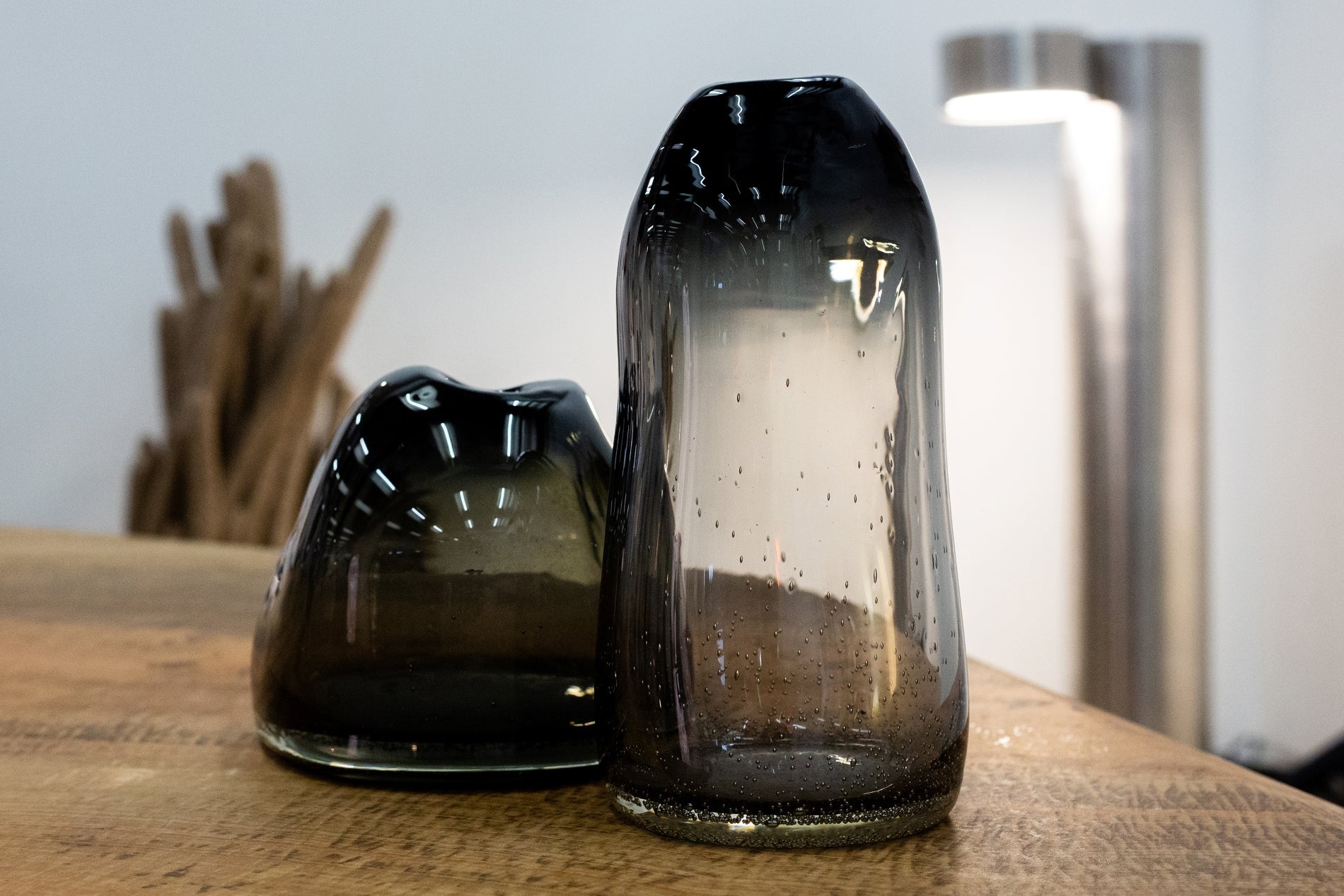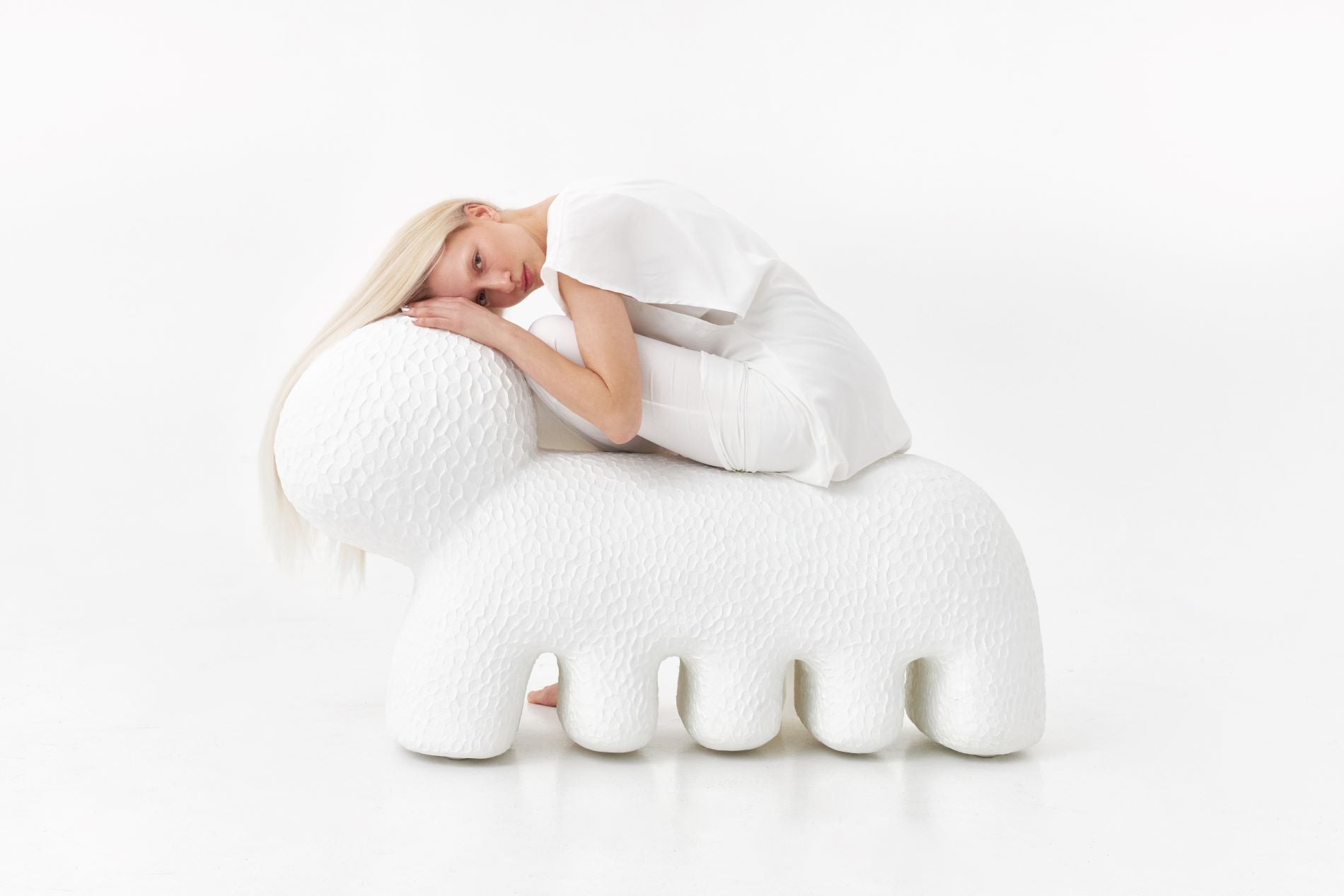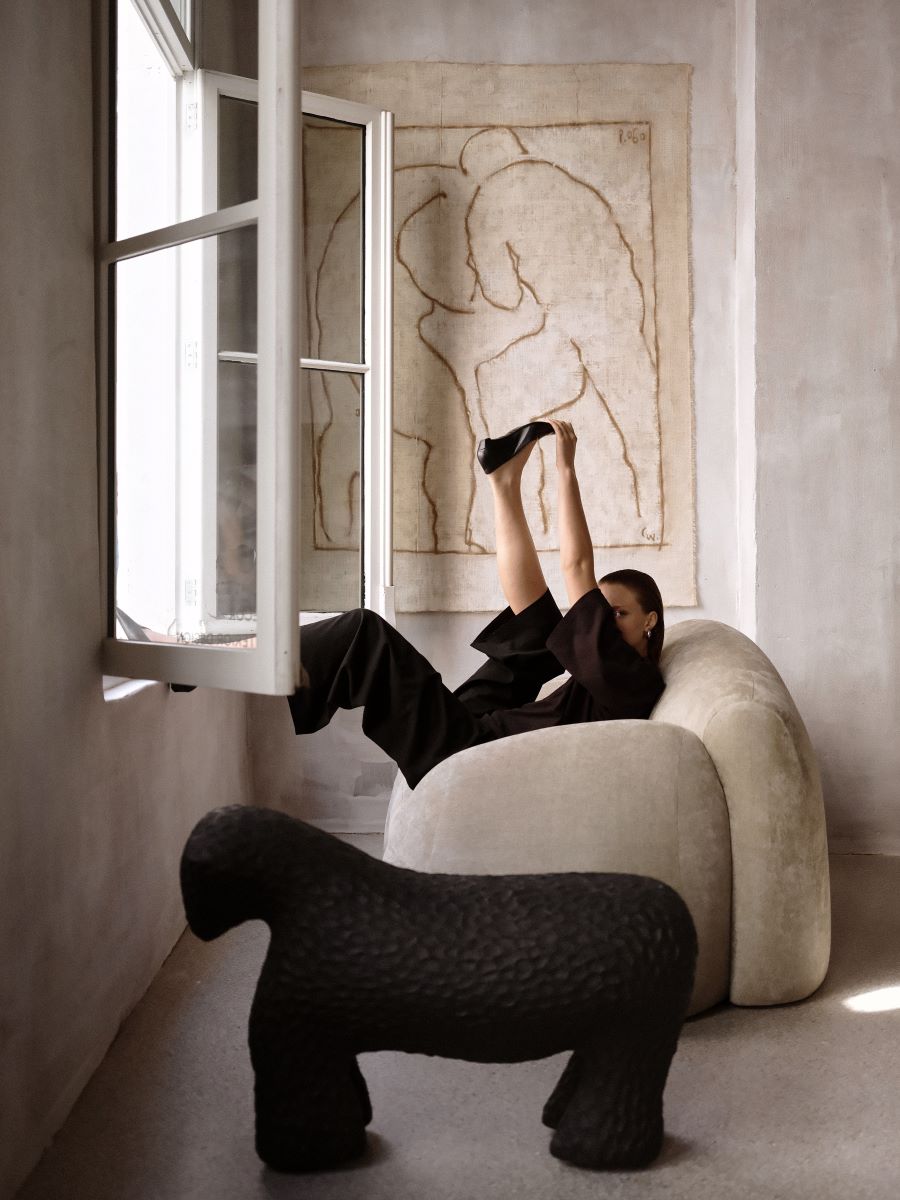DYZHIY stools by Victoria Yakusha

Functional Sculptures: Decorative Designer Pieces with Practical Purpose
DYZHIY stools by Victoria Yakusha
In the world of interior design, the notion of functionality no longer exists in opposition to aesthetics. Modern interiors emphasize pieces that merge these two aspects, balancing both beauty and purpose. Designer sculptures exemplify this trend, transforming spaces not only as decorative elements but also as functional pieces that serve practical purposes. Often referred to as “functional art,” these sculptures blend form and utility, making them essential in contemporary interior spaces. This article explores the multifaceted role of designer sculptures in interior design, examining how they embody both artistic expression and functional necessity.
Introduction to Designer Sculptures in Modern Interiors
Designer sculptures, also known as functional art, are objects created with both artistic and practical intentions. These pieces are crafted with the skill and vision typically associated with fine art but serve a purpose beyond mere decoration. In the modern interior, designer sculptures have emerged as focal points, infusing rooms with character and personal style while offering functional uses such as storage, seating, or lighting. The interplay between aesthetics and functionality elevates interiors by creating spaces that are visually appealing yet purpose-driven, meeting the demands of modern life without sacrificing artistry.
TIARA vase Limited Edition by Victoria Yakusha

TIARA vase Limited Edition by Victoria Yakusha
Strategies for Harmonizing Beauty and Utility
Choose Pieces with Dual Intent
Selecting sculptures that serve as both art and function can help maintain the balance. For instance, a shelving unit shaped like a tree may serve as a piece of wall art as well as storage.
Consider the Room’s Needs
The functionality of a sculpture should align with the specific needs of the space. For example, in a living room, a sculptural coffee table might be ideal, while in a hallway, a functional sculpture with storage capabilities could be more useful.
Focus on Material and Form
The material and form of a sculpture can influence both its aesthetic and practical value. Sculptures crafted from durable materials like metal or stone tend to have longevity and can withstand daily use. Additionally, pieces with simple, clean lines may integrate better into minimalist spaces, while more complex forms may suit eclectic or traditional designs.
When choosing designer sculptures, it’s also essential to keep in mind how the piece will be used. Pieces that are likely to receive heavy use should be crafted from durable materials, while decorative sculptures may be more delicate.
DYZHIY stools by Victoria Yakusha

DYZHIY stools by Victoria Yakusha
Definition and Meaning of Designer Sculptures
Designer sculptures can be understood as art pieces crafted with both form and purpose in mind. Unlike traditional sculptures, which are primarily decorative, designer sculptures integrate functionality, allowing them to perform practical roles within an interior. Their appeal lies in the combination of expressive design and everyday utility. Whether they serve as bookshelves, tables, or even lighting fixtures, these sculptures add a unique aesthetic dimension to spaces, blurring the line between art and utility.
The presence of designer sculptures in interior design fulfills the desire for pieces that are not only pleasing to the eye but also serve a tangible purpose. In many modern homes, space is limited, and every object must justify its place in a room. Designer sculptures fulfill this requirement, making them a perfect fit for minimalist and contemporary interiors that prioritize purpose and style.
Designer Sculptures as Decorative Elements
As decorative elements, designer sculptures bring an artistic flourish to any room. They can vary from bold, statement-making pieces that command attention to subtle, understated works that enhance the surrounding decor. Sculptures add depth and personality to interiors, offering textures, shapes, and visual interest that complement or contrast with other design elements.
VOLYK bench by Victoria Yakusha

VOLYK bench by Victoria Yakusha
Accenting Spaces with Sculptures
Designer sculptures are often used to create focal points within a space, drawing the eye and setting the tone for the entire room. A large, intricately designed sculpture can become the heart of a living room, while smaller sculptures strategically placed on shelves or tables can serve as accents that enhance the room’s overall aesthetic. Additionally, sculptures offer an opportunity to introduce contrasting materials, colors, or styles, adding visual richness to spaces without overpowering them. For example, a polished metal sculpture can create a striking contrast against a rustic wooden backdrop, adding depth and intrigue.
Designer Sculptures as Practical Elements
Beyond their decorative appeal, many designer sculptures are crafted with practical functions in mind. These pieces may be shaped as tables, chairs, sofas, shelves, or even lighting fixtures, seamlessly integrating art into everyday life. The beauty of functional sculptures lies in their ability to perform practical roles while retaining the aesthetic qualities of an art piece.
Examples of Sculptural Functionality
Sculptural Tables
Many sculptural tables serve as both functional furniture and art pieces. A table shaped like a flowing wave or a tree trunk can add an organic touch to a room while providing a practical surface for daily use.
TIARA vase by Victoria Yakusha

TIARA vase by Victoria Yakusha
Sculptural Benches and Stools
Sculptural benches and stools have emerged as a popular category in designer furniture, offering both seating solutions and artistic expression. These pieces often feature unconventional shapes and materials, transforming functional items into striking decor elements. For example, a bench with a fluid, wave-like design not only provides seating but also serves as a conversation starter. Similarly, stools designed with intricate patterns or sculptural forms can enhance the visual appeal of a space while fulfilling their practical purpose.
Shelving Units
Designer shelving units often incorporate sculptural elements, transforming basic storage solutions into works of art. An asymmetrical shelf, for example, can bring a modern aesthetic to a room while offering a space to display books, plants, or other decorative items.
Lighting Sculptures
Sculptural lighting fixtures have become increasingly popular in recent years, offering illumination as well as visual interest. Chandeliers, wall sconces, and floor lamps with unique shapes and materials can serve as both functional lighting and decorative art.
These practical elements not only fulfill practical roles but also contribute to the ambiance of the room, creating a cohesive design that balances form and function.
Balancing Aesthetics and Functionality
Achieving harmony between aesthetics and functionality is essential for integrating designer sculptures into interiors. While the visual impact of a sculpture is important, it should not detract from its practicality. The key is to find pieces that offer both qualities, blending seamlessly into the room without overpowering the overall design.
Shvudkonig sculpture from the LAND OF LIGHT collection Holiday Edition, and the TIARA vase by Victoria Yakusha

Shvudkonig sculpture from the LAND OF LIGHT collection Holiday Edition, and the TIARA vase by Victoria Yakusha
Integrating Designer Sculptures in Your Space
Designer sculptures offer a unique way to combine art and function, allowing homeowners to create interiors that are both beautiful and practical. Whether they serve as statement pieces or subtle accents, these sculptures can transform spaces, imbuing them with personality and purpose. By choosing pieces that balance aesthetic appeal with practical functionality, it’s possible to craft interiors that resonate with both visual beauty and everyday needs.
For those looking to add depth and interest to their interiors, designer sculptures provide a way to merge creativity with functionality. Consider incorporating one or two sculptural pieces into your space—whether a practical coffee table with a unique design, a decorative shelf that doubles as a focal point, or an artful lighting fixture that adds both illumination and style. With careful selection, designer sculptures can enrich your home, creating a dynamic environment where art meets function, ultimately enhancing interiors with functional art pieces. Integrating art with functionality in home decor opens a realm of possibilities, where every sculpture serves a purpose while enriching the aesthetic experience of the space.
You may also like

10 Years of FAINA: A Decade of Cultural and Sus...
LEARN MORE
Functional Art Furniture: Top 5 Unique Designs ...
LEARN MORE
Animism in Design: Creating Meaningful Connecti...
LEARN MORE
Victoria Yakusha Gallery Presents Ukrainian Des...
LEARN MORE
“Land of Light” by Victoria Yakusha Featured at...
LEARN MORE
The Essence of Treasure: Victoria Yakusha’s SKA...
LEARN MORE
First to Present Ukrainian Product Design: FAIN...
LEARN MORE
What Is “Living Minimalism” in Contemporary Des...
LEARN MORE
Miami’s Creative Scene: Exploring the Best in P...
LEARN MORE
Luxury Interior Design Trends 2025: Tips to Rev...
LEARN MORE